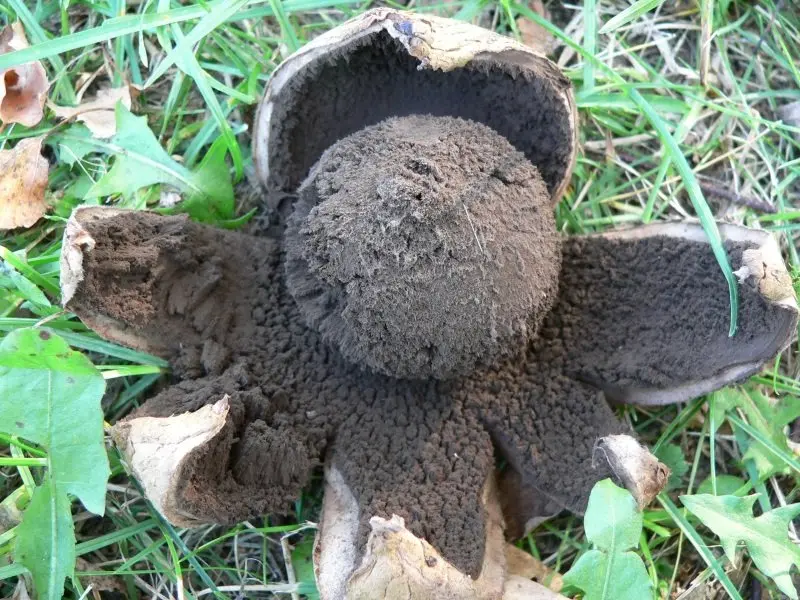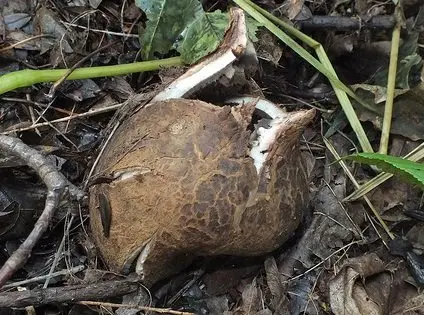Black-headed Starfish (Geastrum melanocephalum)
- Division: Basidiomycota (Basidiomycetes)
- Subdivision: Agaricomycotina (Agaricomycetes)
- Class: Agaricomycetes (Agaricomycetes)
- Subclass: Phallomycetidae (Velkovye)
- Order: Geastrales (Geastral)
- Family: Geastraceae (Geastraceae or Stars)
- Genus: Geastrum (Geastrum or Zvezdovik)
- Type: Geastrum melanocephalum (Black-headed starfish)

The young fruiting body is spherical, pear-shaped or bulbous, 4-7 cm in size, with a sharp spout up to 2 cm long, color from white to brown. Exoperidium (outer shell) fused with endoperidium (inner shell). An important feature is the destruction of the endoperidium during maturation, as a result of which the gleba is completely exposed. It can develop both on the ground and protruding partially above the surface. When ripe, the outer shell breaks star-like into 4-6 (5-7) lobes (there are reports of 14 lobes), spread out on the soil or raising a spherical gleba above the ground.
Just like the giant raincoat, it can be classified as a “meteor” species.
The pulp is initially dense, consisting of capillium and spores, as it ripens, slightly fibrous, powdery, dark brown. Capillium ( thin fibers) promotes loosening of the spore mass, and its hygroscopicity causes movement and promotes spraying of spores.
HABITAT
The fungus grows on humus soils in deciduous forests, forest belts of maple, ash, honey locust, forest parks, and gardens. It is found not too often or even more rarely in areas with a warm climate, in rare deciduous groves, parks and gardens, less often in coniferous forests. It is found in the forests of Europe, as well as in the mountain forests of Central Asia. Note that this species is not distributed far north. In Western Europe, it is known only in Hungary, Germany, Austria, Switzerland. In the European part of Our Country, it goes north no farther than the Moscow region. The view is rare.

SIMILAR TYPES
Due to the large size, naked, hairy ball of the fruiting part, which, when ripe, is not dressed in the inner layer of the shell, the black-headed earth star cannot be confused with other types of earth stars.









